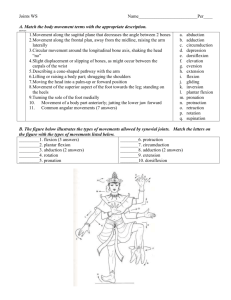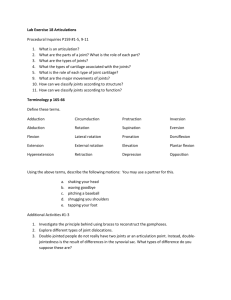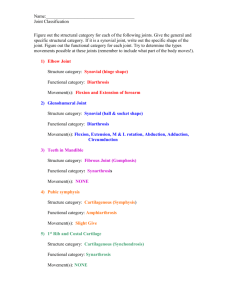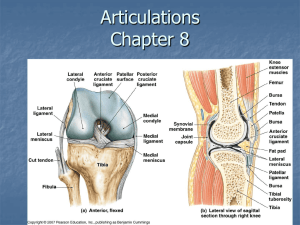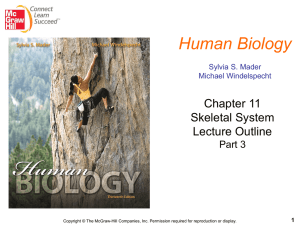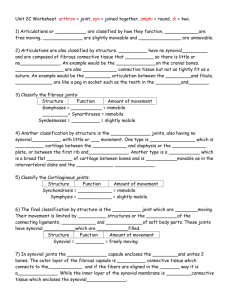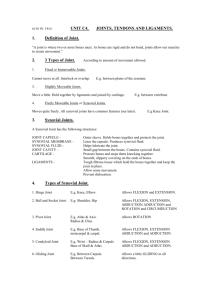Lecture 8
advertisement
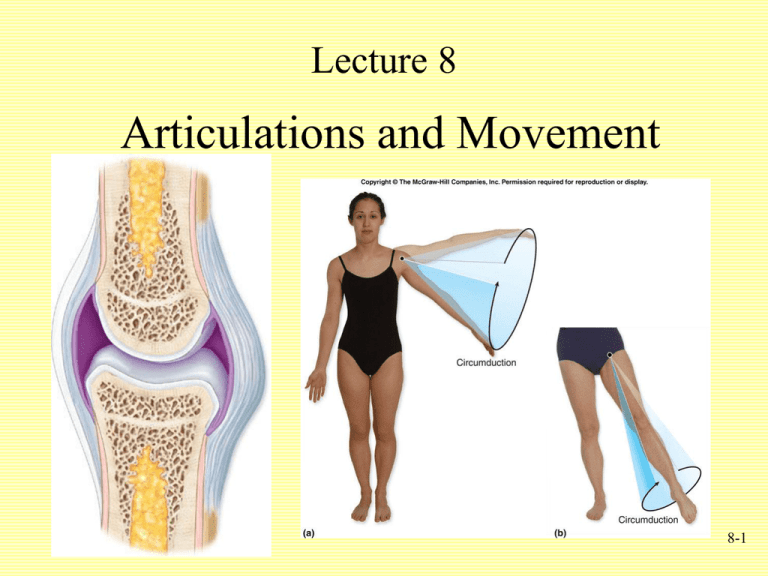
Lecture 8 Articulations and Movement 8-1 Articulations or Joints • Articulation or Joint – Place where two bones come together – Freely movable to limited to no apparent movement – Structure correlated with movement 8-2 Classes of Joints Structural: Based on major connective tissue type that binds bones – Fibrous • Skull sutures – Cartilaginous • Pelvic girdle • Between the vertebrae – Synovial • Most common 8-3 Synovial Joints • Allow considerable movement • Most joints that unite bone of appendicular skeleton • Complex – Articular cartilage and disks – Joint cavity and capsule – Synovial membrane and fluid • Bursa (plural bursae) – Pockets of synovial fluid Fig. 9.4 8-4 Types of Movement • Angular – Flexion and Extension • Hyperextension – Abduction and Adduction – Circumduction • Circular or Rotational – Rotation – Pronation and Supination • Special Movements 8-5 Flexion and Extension Fig. 9.7 8-6 Abduction and Adduction Fig. 9.8 8-7 Circumduction Fig. 9.9 8-8 Rotation Fig. 9.10 8-9 Pronation and Supination Fig. 9.10 8-10 Special Movements • Unique to only one or two joints • Types – Elevation and Depression – Protraction and Retraction 8-11 Elevation and Depression Fig. 9.11 8-12 Protraction and Retraction Fig. 9.11 8-13 Review Question What action takes place at both the hip and knee when a sprinter leaves the block? (a) extension (b) flexion (c) abduction (d) depression (e) retraction 8-14 Points to Remember • A joint or articulation is a meeting between two bones and does not necessarily imply movement • A joint can be classified according to its structure • Synovial joints are the most complex • Specific terms are used to describe the movements of joints that are freely movable. • Commonly grouped in opposing pairs that move a part of the body in relation to the anatomical position. 8-15 Questions? 8-16
